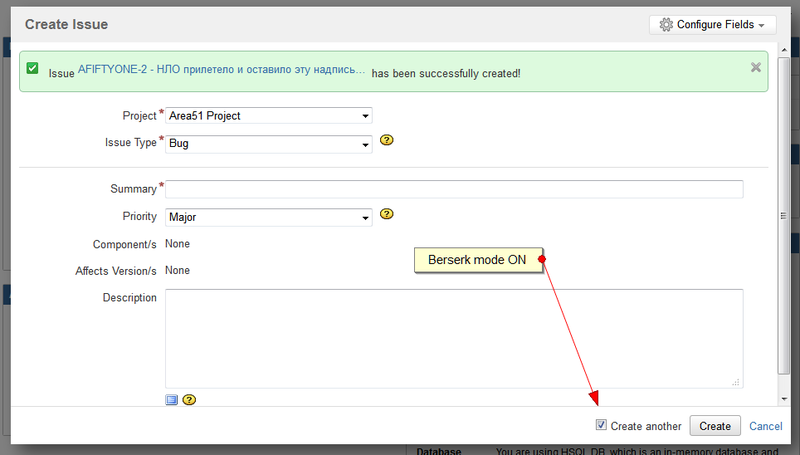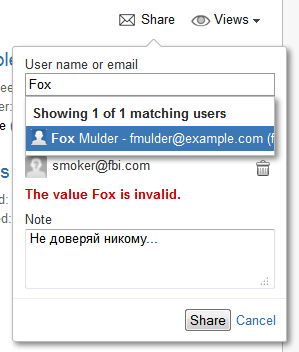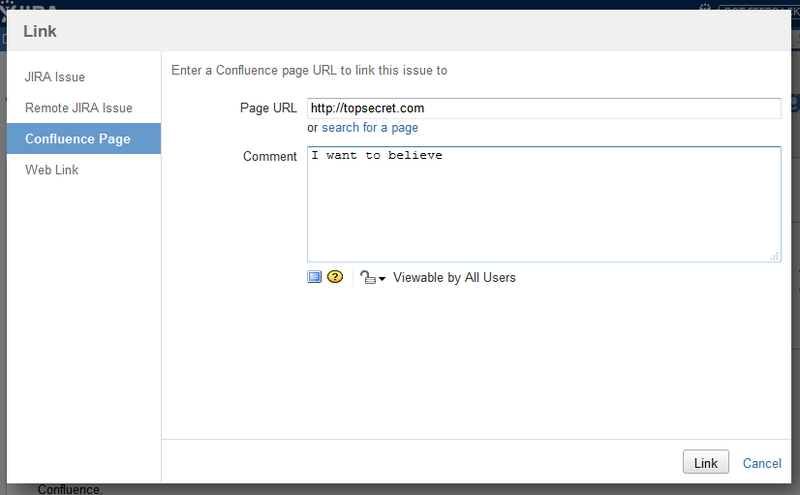High five. Or meet JIRA 5.0

A couple of days ago, the 5th version of the well-known issue tracker JIRA from Atlassian was released . Over the past months, I have already played enough with the beta versions and release candidates, now I looked at the release and was pleased. A little story about what exactly pleased me is waiting for you under the cut.
The previous major version 4.0 was released in October, the bearded one of 2009. Fresh minor version 4.4 is dated August of last year. Now it is time for the Fives.
')
What will please?
JIRA 5.0 does not carry a new glossy interface or artificial intelligence. This version appeared in favor of administrators and developers, which were often forgotten before. But the end users will not be left without tasty buns.
A full review of new features can be found here , and I’ll dwell on those who personally “hooked” me. So let's get started ...
It is more convenient to create applications
If you have seen confused faces of users who first created an application in JIRA, or you lose yourself, from time to time, in the “footcloth” of the fields, then this feature is for you.

At any time, you can choose the fields that you need for productive work, and simply hide the rest. Naturally, JIRA will not let you hide the required fields that do not have default values.
There is also a useful tick "Create another", which will help you create new applications with berserk fury.

@Mentions
When you type something like ipetrov in the text of the comment, the notification of this comment will go to the user with that name, even if he is not subscribed to the notification on this request. And auto-substitution of user names makes life even easier.

Share requests
In Confluence , convenient mechanisms have appeared for quite some time, allowing to “share” interesting pages and attract new people to the discussion. Now there is a similar feature in JIRA.

The Share button brings up a convenient dialogue where you can specify the desired JIRA users, or e-mails of those who do not have an account with JIRA, and send them an e-mail application with a small accompanying note. It is unlikely that such a thing is useful for the discussion of applications (after all, it is better to do this in the comments), but it will certainly help to attract the right people to the discussion.
Note that this option will not be available until you specify the outgoing mail server in the JIRA settings.
Remote binding applications
Previous versions of JIRA provided the ability to link several applications among themselves, which made it easier to work with duplicate applications, applications that are waiting for one another, etc. Those users who wanted to put a link to a related article in Confluence, a request in another bugtracker or helpdesk, had to do it with their hands, look for plugins or invent bicycles. Now you can:
- Link two applications from different JIRA instances
- Associate an application with a page in Confluence
- Associate a request with any URL
- Create these links programmatically via the API

Developers, breathe more freely!
For developers, he rolled a whole heap of innovations that make life easier, while integrating JIRA with other systems and writing plug-ins for it.
REST API - even cooler
Now the REST API is not some kind of pathetic appendage to JIRA, but a completely functional thing. Through it you can now:
- Create and edit applications
- Delete entries
- Link applications
- Receive information about applications, filters, dashboards and access rights
- And many other goodies
The REST API Browser available in the SDK will simplify the process of exploring the new API. In fact, it is a plugin that gives you a convenient opportunity to study and play with the JIRA REST API.
JAVA API - now more stable
Finally, JIRA developers have promised not to break our heads for the Java API. The API has been cleaned, rewritten in places, and should now be stable and compatible with future versions. Plug-in developers quickly read about how to prepare yourself for JIRA 5.0.
What is the result?
If you use JIRA without tricky customizations and plug-ins, then nothing can keep you from upgrading to 5.0 (hey! Don't forget to check everything on the test server first). Update in this case occurs without problems.
The main problem that may prevent you from upgrading is plug-in compatibility. At the moment, of the ~ 420 plug-ins on the Plugin Exchange with the "five" are compatible ~ 130 . On the one hand, plugins for 5.0 are now easier to write, but at the same time, porting them from 4.x to 5.0 may take time.
Well, if you yourself changed something in JIRA, ruled the templates, added your handlers to e-mails or did some other convenient, but hacking things, don't forget about the Answers service, where you can perplex the community with your question and get help, as well as the Checkup service, which allows you to check if you are using an API that has been modified / deleted in the new version of JIRA.
Good luck in the update! And give Five!
Source: https://habr.com/ru/post/138794/
All Articles